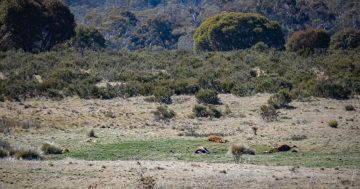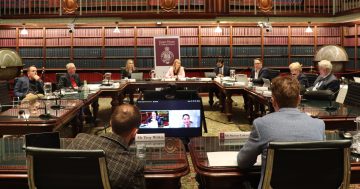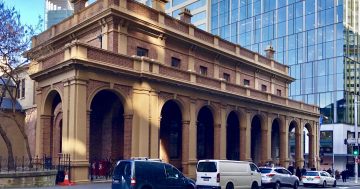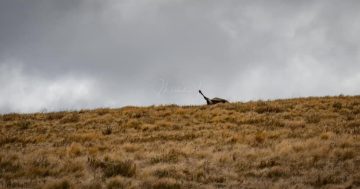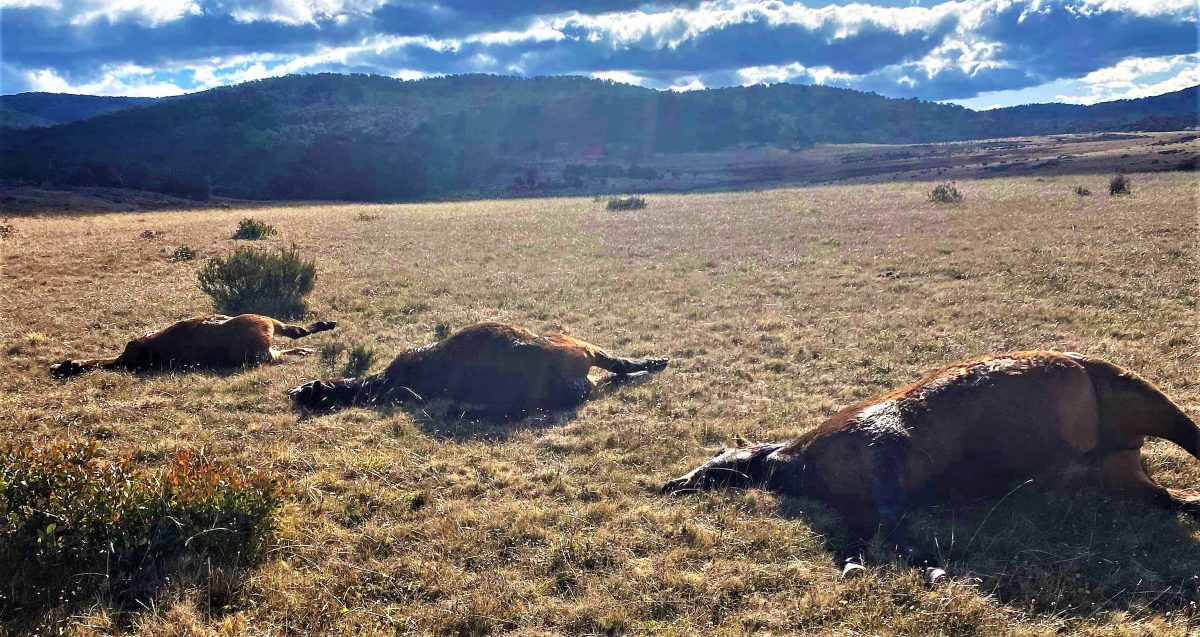
These wild horse carcasses were recently discovered on the Snowy Plain. Photo: Supplied.
WARNING: This article contains images that may distress some readers.
“The horses are doomed, they’re doomed and frankly I despair there’s nothing that can be done to protect them.”
Peter Cochran had just viewed graphic photos of the latest ground shooting cull of brumbies, or wild horses, in Kosciuszko National Park. In Canberra on Friday, bound for a campdraft at Willinga Park, he decided to turn around and head back home.
He confirmed an estimated 67 carcasses were this week discovered laying en masse on the vast Snowy Plain at the heart of the national park – some with stomach shots, others shot multiple times and scores of mares with bubbled rear protrusions that were spontaneously aborted foals.
“It is bloody horrible this, the result of what is supposed to be humane culling in a sub-alpine – not alpine – area and some of those horses would have had slow agonising deaths, which is probably why they had to be shot twice,” Peter said.
“And I don’t know any mob of horses that would stay still after a shot has been fired, so I reckon this is the result of horses being shot elsewhere and being choppered into one spot,” he said.
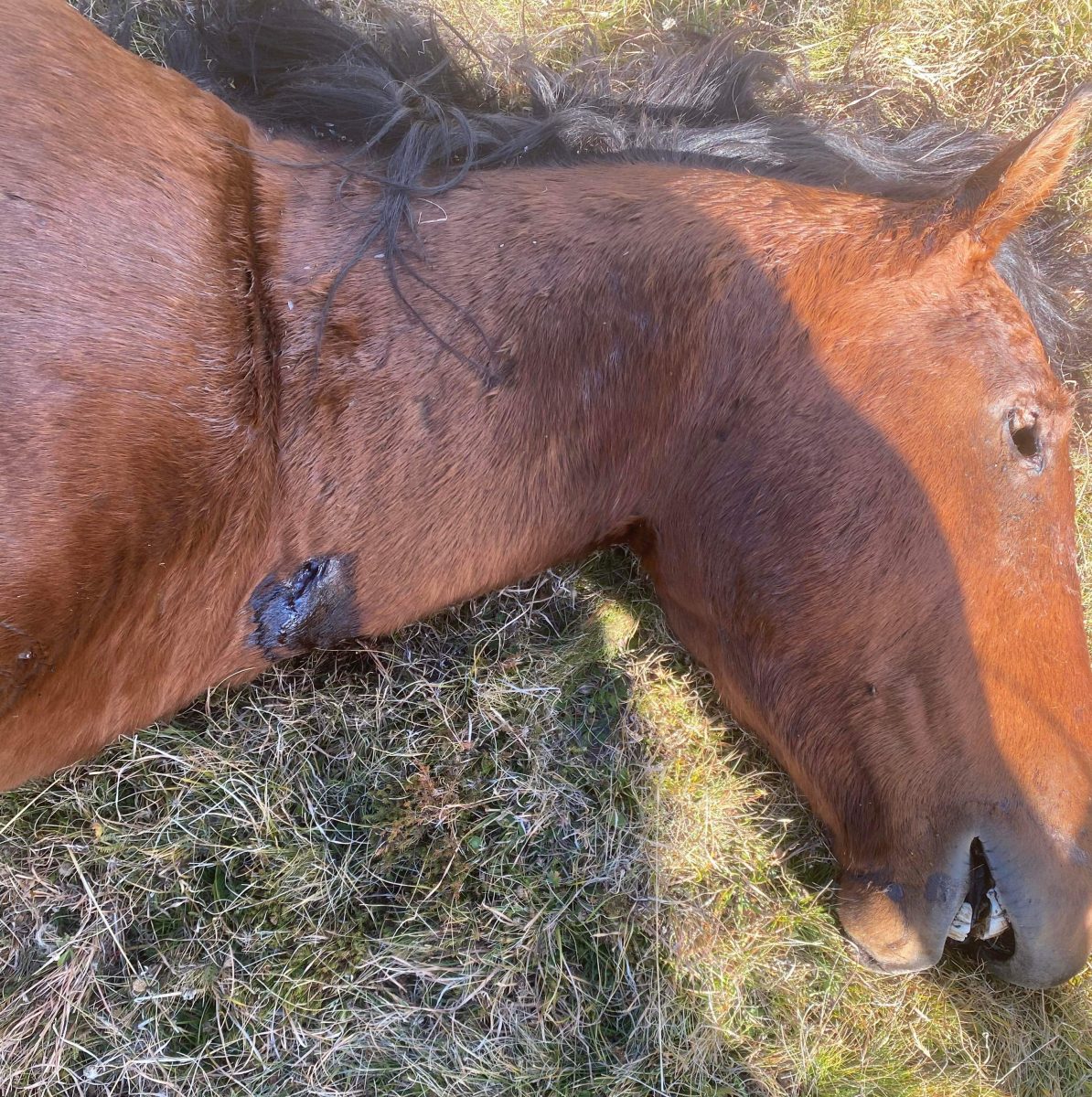
Some of the horses were shot in the neck, a situation Peter Cochran says would not have been humane. Photo: Supplied.
In the final weeks before the park closes for winter, a chilly despondency prevails among brumby supporters who Peter says feel crushed after years of campaigning to have the brumby – who many say embody the free and bold landscape of the Australian Alps through the soaring prose of Banjo Patterson – protected.
“[State Member for Monaro] Steve Whan had an interview with some of the locals in Jindabyne this week and he said, quite frankly, he didn’t believe in rehoming and trapping brumbies, that they should all be shot from the air,” Peter said, “and that’s our local member, not that his predecessor was a great deal better, she wasn’t very vocal about it.”
A former Monaro MP, NSW deputy premier and National Party leader John Barilaro had introduced the “Brumby Bill” into the NSW Parliament in 2018, an act recognising the heritage value of sustainable wild horse populations within parts of Kosciuszko National Park and protection of that heritage.
Then a wild horse heritage management plan, prepared to meet the requirements of the Kosciuszko Wild Horse Heritage Act, adopted by the former NSW energy and environment minister Matt Kean in 2021 undertook to protect the heritage values of wild horses by retaining a wild horse population of 3000 horses in 32 per cent of the park, in areas strongly associated with wild horse heritage values.
This meant reducing the estimated population of 14,380 horses in 2020 to 3000 horses by 30 June 2027 in accordance with best practice animal welfare requirements.
A November 2022 survey of the wild horse population in Kosciuszko National Park showed wild horse numbers had increased to 18,814 horses, despite two years of culling operations.
Peter Cochran says the view from his saddle is very different.
“If there was a sea of horses you would notice,” he said, “but you have to go a long way to sight any brumbies up there, unless you head to Currango Plan and Tantangara where there are masses, but in my opinion they’re retained for propaganda purposes,” he said. “If there’s a minister to be shown the brumbies in sizeable numbers that’s where they’ll be taken.
“But nobody’s listening to the truth, or common sense, and the science is being corrupted by politics.”
Monaro’s MP for 10 years, Peter now runs commercial horse treks throughout the Snowy Mountains and knows the Snowy Plains area quite well: “I’ve ridden all over it, and there’s little evidence of horse activity,” he claims.
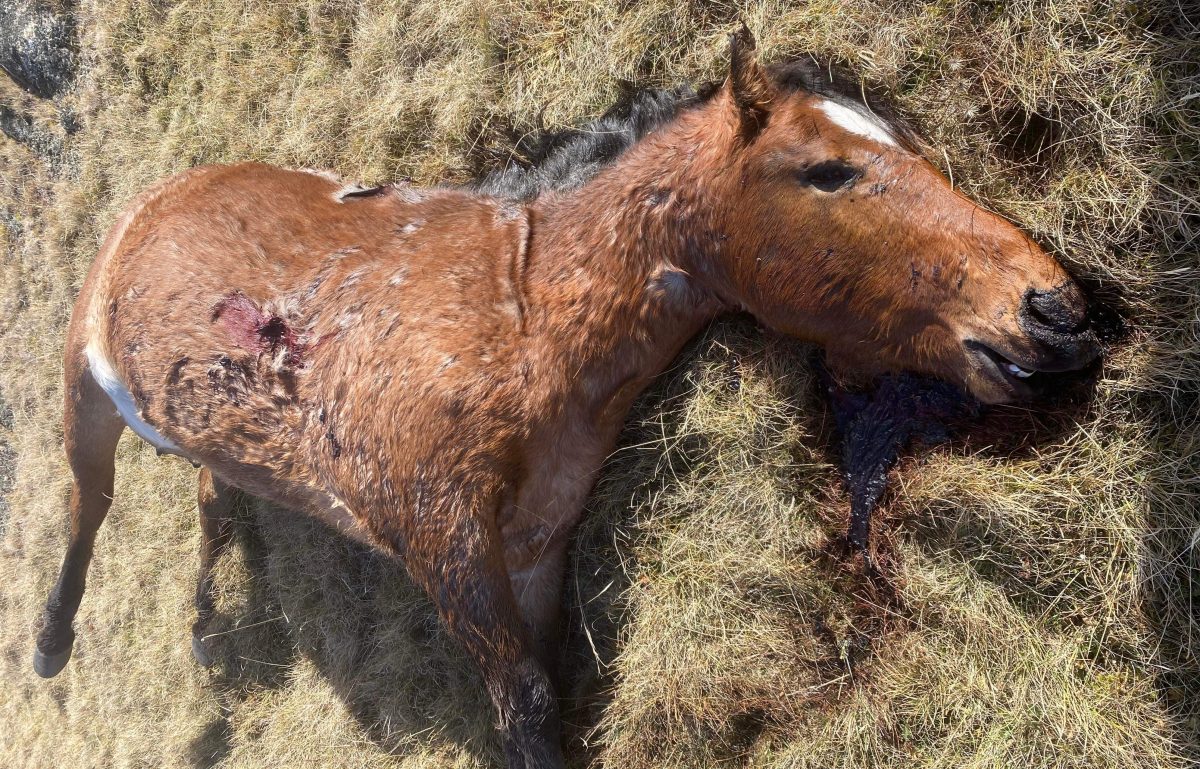
Nobody’s listening to the truth, or common sense, and the science is being corrupted by politics, says brumby advocate Peter Cochran. Photo: Supplied.
“You can barely see where they’ve [the wild horses] been, I’ve always said it’s outrageous they’re being culled on the nonsense they are destroying the environment – when you see the number of other species up there destroying the park – foxes, pigs, deer – it’s incomprehensible the horses are being blamed,” he said, “and you don’t have to go far to see the damage being wrought by Snowy 2.0, yet not a word is said about that.”
Also abhorrent to Peter are claims National Parks and Wildlife Service (NPWS) officers’ lives are under threat, something he has yet to see evidence of.
“Yet there are signs up everywhere warning people not to take photos of staff while they’re working.”
In September 2022 police launched an investigation into a handwritten letter threatening to “firebomb” a Snowy Mountains NPWS office over the wild horse cull, as well as social media threats targeting staff.
“If evidence exists that threats are being made then someone, regardless of who they are, should be charged, but none of that has occurred.”
Implementation of the wild horse management plan was also paused as an investigation into the culling of 11 horses near Kiandra took place and all ground shooting in the park ceased after allegations of mismanagement were raised after a cull of feral deer in Moonbah, near Jindabyne, in February 2022.
With a total 89 submissions to the national inquiry into the impacts and management of feral horses in the Australian Alps and a reporting date of 9 June, Peter says he’s under no illusion that isn’t a foregone conclusion.
“You’ve got an independent senator holding the government to ransom demanding that the horses be shot and they need his numbers to get the Voice through,” Peter said. “I’m pragmatic enough to know what’s going to happen.”
Monaro MP Steve Whan said he supported the reduction in numbers of wild horses in KNP and, if numbers had to be reduced to 3000, rehoming wasn’t going to suffice.
“I don’t have an objection to shooting from the air, it’s done for a lot of animals, including deer and pigs. But at this stage we’re not doing that. So at this stage, we’re implementing the previous government’s plan that actually involves ground shooting,” he said.
Shooters employed by NPWS, Mr Whan said, were required to meet extremely high criteria for the accuracy of their kills.
“They have to meet a standard which means that they can kill humanely,” he said, “and I would expect them to be meeting that.
“I certainly acknowledge that these operations are not pretty and nobody likes to see photos of them but if we’re going to reduce the numbers down to around the 3000 then shooting has to be a part of it.”
Comment was also sought from NSW Environment Minister Penny Sharpe but none has been forthcoming.








